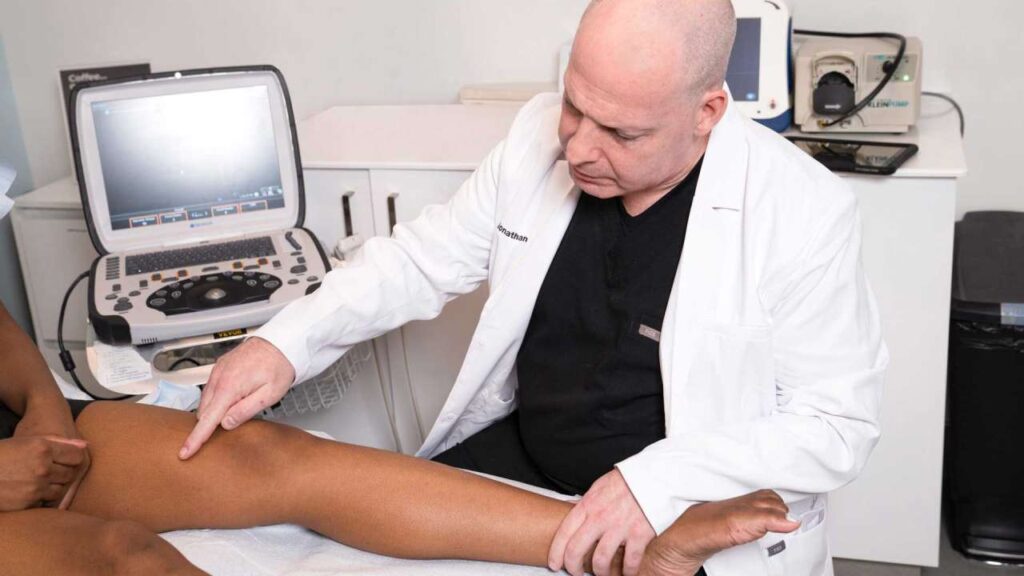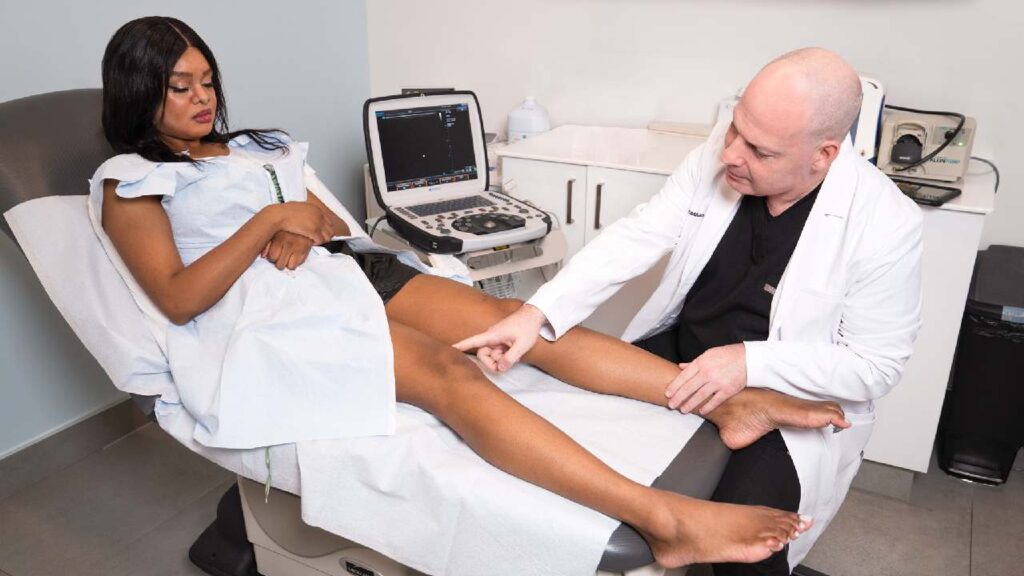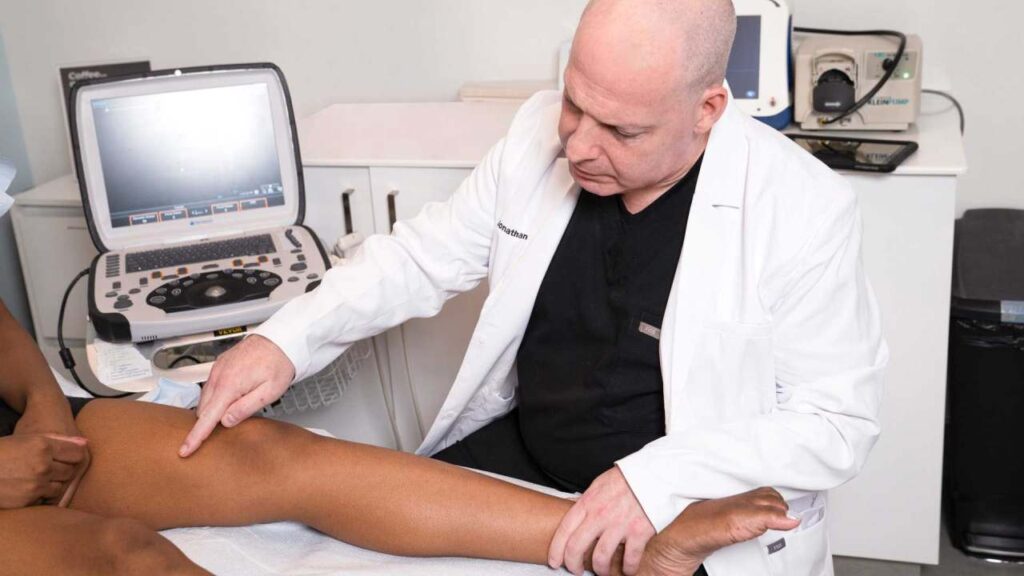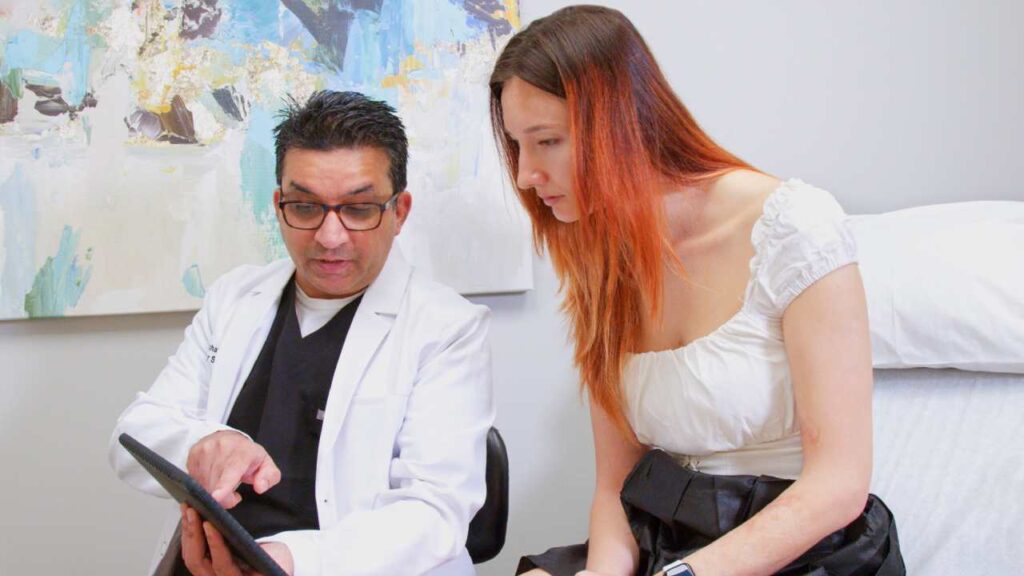Spider veins and their underlying vein disease can cause a lot of pain and discomfort, and the best way to address it is to seek treatment at a reputable vein clinic. Especially during pregnancy, it is important to be proactive when it comes to your health, so click HERE to book an appointment at our excellent vein clinic in NYC, or keep reading to learn more about spider veins during pregnancy.
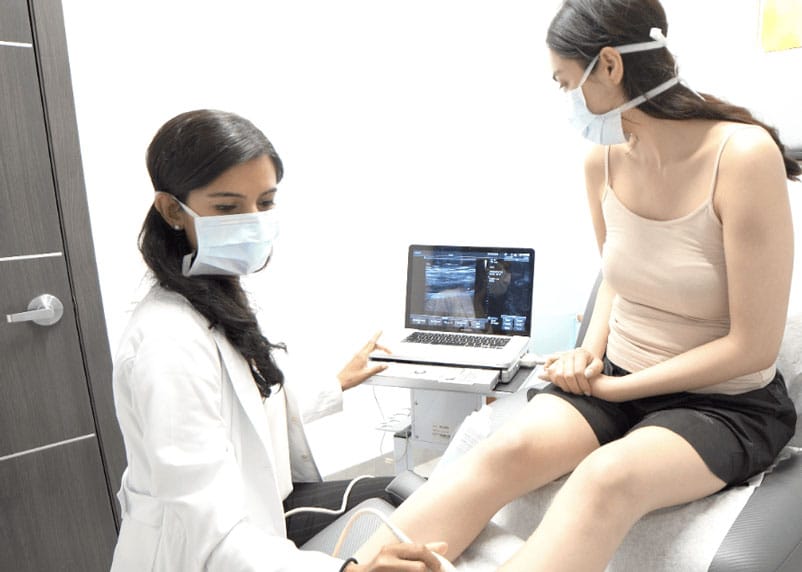
What are some of the risk factors that contribute to vein disease?
Some of the risk factors that contribute to vein disease are given here in descending order of significance. They all have the same end result of weakening the vein valves or dilating the vein walls, so if you have one or more of these risk factors, schedule an appointment at a vein treatment clinic to seek vein disease therapy.
- Genetics
- Biological Sex
- Pregnancy
- Age
- History of Blood Clots
- Obesity
- Occupation
How does biological sex increase risk of vein disease?
Because of female hormones such as estrogen and progesterone, women are more likely than men to develop vein disease. Vein disease affects at least half of all women because female hormones affect vein wall relaxation, which reduces blood pressure and can lead to venous insufficiency. This venous insufficiency can result in spider and varicose veins, especially localized on the lower limbs.
How does pregnancy increase risk of vein disease?
Pregnancy increases the risk of vein disease in several ways. The higher levels of hormones that we mentioned earlier, such as estrogen and progesterone, during pregnancy, causes vein wall relaxation and an increase in total blood volume in the body during gestation. This leads to vein expansion that can manifest as spider and varicose veins. Additionally, as the uterus expands, it can put a strain on veins and impede blood flow.
Compression Stockings
Compression socks improve blood circulation by applying pressure to the ankles and feet, causing blood to flow towards the heart. They are a temporary remedy that cannot permanently treat spider veins because they are only effective while used and can only relieve some of the symptoms and pain. Some compression stockings are accessible over-the-counter, but to minimize complications, they should be fitted by a vein specialist.
Non-Restrictive Clothing
This might sound contradictory after we just talked about compression socks, but for the rest of your wardrobe, loose, flowing, and non-restrictive garments that promote blood circulation are much better than tight, form-fitting ones. If you have spider veins or varicose veins, high heels, as opposed to flat shoes, prevent increased blood flow and pooling in the foot.
Diet
Consuming a variety of fresh fruits and vegetables ensures that your body receives all of the nutrients it needs. Most green vegetables and fruits are also high in fiber, which helps with bowel movement and can help you avoid constipation, which can raise blood pressure. Furthermore, avoiding salty meals and remaining hydrated to assist your body flush out excess salts will lower blood pressure in your vein walls, preventing vein disease from worsening.
Keeping Legs Elevated
Venous insufficiency causes spider and varicose veins, which occur when blood travels in the opposite direction of the heart and accumulates around the veins in the legs, causing them to protrude. Simply propping up your legs after a long day on your feet can promote blood circulation, reduce swelling, and prevent blood from pooling in the veins of your legs.
Massage
Massages are not only extremely soothing, but they can also improve blood circulation. Although gentle pressure on your lower limbs can alleviate some of the pain and discomfort caused by spider and varicose veins, direct pressure on the veins can be harmful because the skin in that area is especially sensitive and fragile.
Exercise
Light aerobic activity that boosts your heart rate helps enhance blood circulation in the legs and force stored blood back into the veins. Walking, running, or jogging can also strengthen your calf muscles and increase blood circulation, but don’t forget to stretch before and after!
Treatment Options
All of the methods listed above can temporarily alleviate the pain and discomfort caused by spider and varicose veins, but the only way to permanently treat vein disease is to seek vein treatment from a vein doctor at a vein treatment center.
Sclerotherapy is a popular treatment for visible spider veins. The vein specialist uses tiny needles to inject medicine (sclerosant) to enhance the appearance of spider veins in just one month.
VenaSeal, radiofrequency ablation, or varithena may be recommended by your vein doctor to target the deeper veins that may be the main cause of your spider veins and varicose veins. All of these are utilized in various situations to target the saphenous veins that cause varicose veins. VenaSeal is a vein adhesive used to close the saphenous vein in the leg, which causes varicose veins. Radiofrequency ablation uses fully safe heat radiation to shut down the damaged vein’s walls. Varithena is a sclerotherapy foam that is injected directly into the vein to reduce the symptoms and size of varicose veins. All of these treatments are painless, take less than a half-hour, and require no anesthesia or recovery time.
Where can I seek vein treatment in NYC?
If you are pregnant and have spider veins or varicose veins, it is time to set up an appointment with a vein specialist in venous medicine to minimize damage to the veins and prevent further problems down the road. Book your appointment at the Vein Treatment Center New York in Manhattan or Long Island and go into your appointment at a vein center in New York feeling more prepared and informed about your treatment plan!
